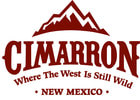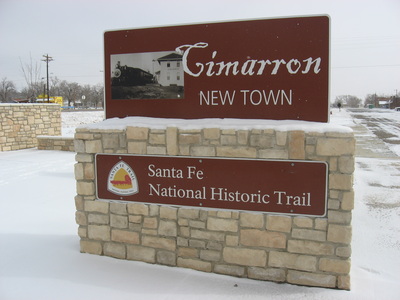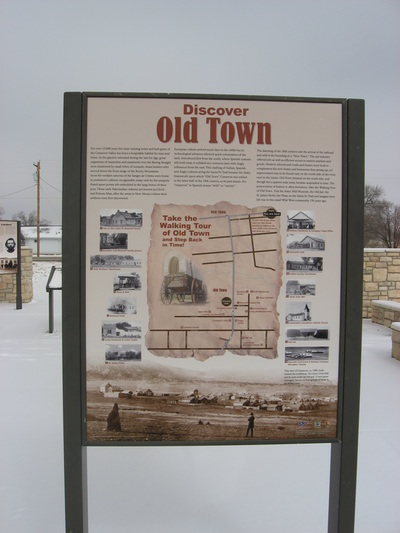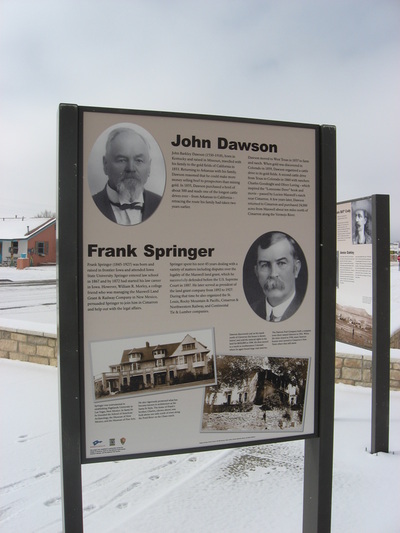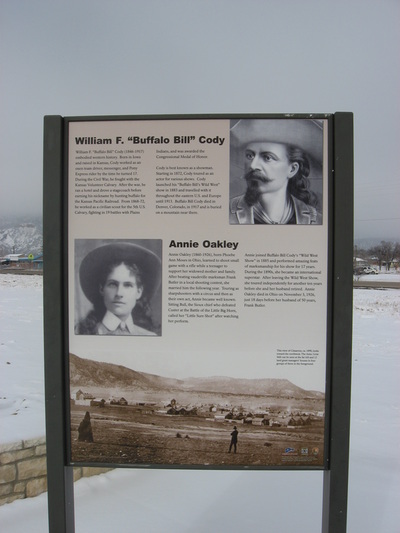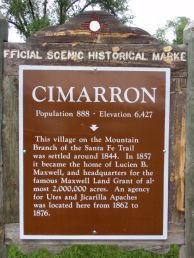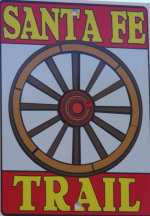
The Santa Fe Trail consisted of two main branches: the original route called the Mountain Branch, which passed through Cimarron, and the Cimarron Cutoff, named for the town near Dodge City, Kansas. The route of the Mountain Branch follows present-day I-25 over Raton Pass (along the railroad tracks) and parallels Hwy 64 to Cimarron, crossing in front of the Visitor Center and across the Cimarron River to Old Town. The two branches met at Fort Union, 90 miles south of Cimarron and the main fort offering protection for travelers along the Trail.
Traces of the Santa Fe Trail can still be seen nearby. One mile north of town along Hwy 64 is a sign noting where the Trail crossed the highway from north to south. Pull off just beyond the sign facing northbound traffic and look to the right (south). A gentle swale about 30 yards wide and a foot deep filled with an abundance of sunflower stalks indicates the path where several wagons rode abreast. As you drive south leaving Philmont Headquarters and begin to veer left, climbing a steep hill, look to your left about 30 yards beyond the highway and you will see a series of ruts where wagons descended the hill. About 13 miles south of Cimarron on SR 21, the road takes a sharp left turn just before a closed gate that opens onto a dirt road. After following SR 21 to the left (east) a few hundred yards, the road slightly slopes down. At the bottom of this gentle dip stop and look to the right (south). Erosion in the distance indicates trail ruts where wagons had to follow in single or double file through the narrow gap between the hills (and parallel to the dirt road on the right).
Traces of the Santa Fe Trail can still be seen nearby. One mile north of town along Hwy 64 is a sign noting where the Trail crossed the highway from north to south. Pull off just beyond the sign facing northbound traffic and look to the right (south). A gentle swale about 30 yards wide and a foot deep filled with an abundance of sunflower stalks indicates the path where several wagons rode abreast. As you drive south leaving Philmont Headquarters and begin to veer left, climbing a steep hill, look to your left about 30 yards beyond the highway and you will see a series of ruts where wagons descended the hill. About 13 miles south of Cimarron on SR 21, the road takes a sharp left turn just before a closed gate that opens onto a dirt road. After following SR 21 to the left (east) a few hundred yards, the road slightly slopes down. At the bottom of this gentle dip stop and look to the right (south). Erosion in the distance indicates trail ruts where wagons had to follow in single or double file through the narrow gap between the hills (and parallel to the dirt road on the right).
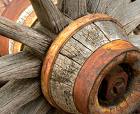
In 1880 the railroad arrived in Santa Fe, relegating the Trail to history. In 1906 a railroad spur arrived in Cimarron, following the Trail from Raton down Hwy 64 and continuing 15 miles further west to the small town of Ute Park. Portions of the old rail bed can still be seen beside the highway in the canyon; the rails and cars were sold around 1940 during the war. The station of the St. Louis, Rocky Mountain and Pacific Railroad was located about 100 yards east of the Cimarron Visitor Center. A large influx of people followed the arrival of the railroad and most of the stores along Ninth Street on the north side of the park date from 1906-1910; this area north of the river is referred to as New Town. Because newcomers preferred to live near the source of their livelihood (the railroad), Old Town remained undisturbed and looks pretty much the same as it did 150 years ago when Maxwell first settled and governed this territory. Compare Cimarron’s plaza with that of Taos, Santa Fe, or Albuquerque, and you’ll see how little things have changed here.
You can download a map/guide to finding the old ruts and swales of the Santa Fe Trail in the Cimarron area by clicking the button at the top right of this page.
You can download a map/guide to finding the old ruts and swales of the Santa Fe Trail in the Cimarron area by clicking the button at the top right of this page.
SANTA FE TRAIL BYWAY INTERPRETIVE CENTER
In Cimarron. On Highway 64, smack dab in the center of town, across from the visitor center, you will see our fantastic Santa Fe Trail Byway Interpretive Center featuring historical information and photographs. Please stop by and enjoy this unique history of Cimarron. (Above Photos courtesy Val Kutz)
SANTA FE TRAIL WALKING TRAIL
|
Along Highway 21 between Cimarron and Philmont is a walking/running trail that follows the Santa Fe Trail. There is some elevation change. Approximately 4 miles one way. Bring water, sunscreen, etc. Philmont staff constructed the trail along New Mexico Highway 21 for community use by ranch staff, visitors, and area residents.
|
MORE INFORMATION
|
